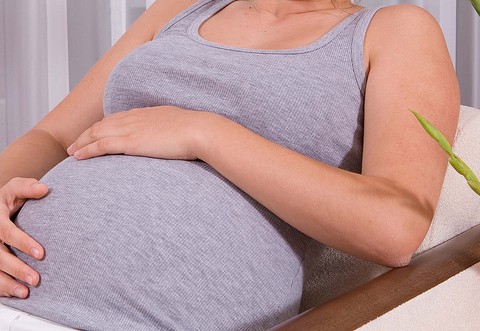Group B Strep is a Bacterial Infection
Group B strep is a bacterial infection that is usually harmless in healthy adults. However, if a woman has a group B strep infection during pregnancy it can pose a health risk to both her and her newborn baby. There are important facts women should know about group B strep infection during pregnancy.

In most cases, the mother will have no symptoms of a group B strep infection.
The bacteria that cause a group B strep infection usually live within the rectal and vaginal areas in the woman. Most women do not have any symptoms of the infection.
Group B strep poses a health risk to the mother.
Although many women do have a group B strep infection and do not have complications, there are certain health conditions that can develop. Women who have a chronic health condition are at a higher risk of developing certain disorders from a GBS infection. If a pregnant woman has a positive GBS test, she is at risk for pneumonia, as well as infections in her bloodstream, heart, joints, skin and bones. She may also experience infections in her bladder, placenta or uterus. In very rare cases, adult women can develop meningitis as a result of a group B strep infection.
There are two types of group B strep disease in infants.
The type of infection the baby has is determined by the age of the baby when he or she exhibits signs of infection.
Babies who develop the disease immediately after birth have early-onset GBS disease.
If the disease occurs right after birth it is known as early-onset GBS disease. Symptoms usually appear within 12 hours; however, they may also appear anytime during the first week of life. The baby may appear drowsy, have a fever, experience difficulty breathing, and feedings may become difficult. The baby is at risk for developing an infection in certain parts of the body including the brain (meningitis), lungs (pneumonia) and blood (sepsis). The baby is also at risk for developing problems of the intestines or kidneys.
Babies can develop group B strep disease up to three months after birth.
Symptoms can appear after the first week of life, and up to the third month of life. This is known as late-onset GBS disease. The baby may experience symptoms that appear similar to a cold, such as coughing, fever or congestion. The baby may also be drowsy, have trouble during feedings and experience seizures. Meningitis (infection and inflammation of the fluid and tissues around the brain) is common in babies who have late-onset GBS infections.
Group B strep infections can reoccur in pregnant women.
The bacteria that causes group B strep infections occur naturally in the intestinal tract of some women. This means that after the woman takes oral antibiotics during pregnancy, the infection can return. Most women will receive antibiotics through an IV line during labor to prevent spreading the bacteria to her baby.
A Few More Facts on GBS Infection
- Early-onset GBS infections in newborns are more common than late-onset infections.
- If a woman does not receive antibiotics and she has tested positive for GBS, the risks of the baby developing GBS disease are 1 in 200.
- One out of every 4,000 babies who are born to women who do have a positive GBS test and d0 receive antibiotics will develop the disease.
- The CDC recommends all pregnant women be screened for group B strep during the last month of pregnancy (between 35 and 37 weeks of gestation.)
- If a baby is born with a group B strep infection, he or she will be given antibiotics through an IV line. The baby may also be given other medications, depending on his or her health.
Thank-you for reading this post. Please feel free to leave your thoughts in the comment section below.
References:
Gbs fast facts. (2010, November 18). Retrieved from http://www.cdc.gov/groupbstrep/about/fast-facts.html